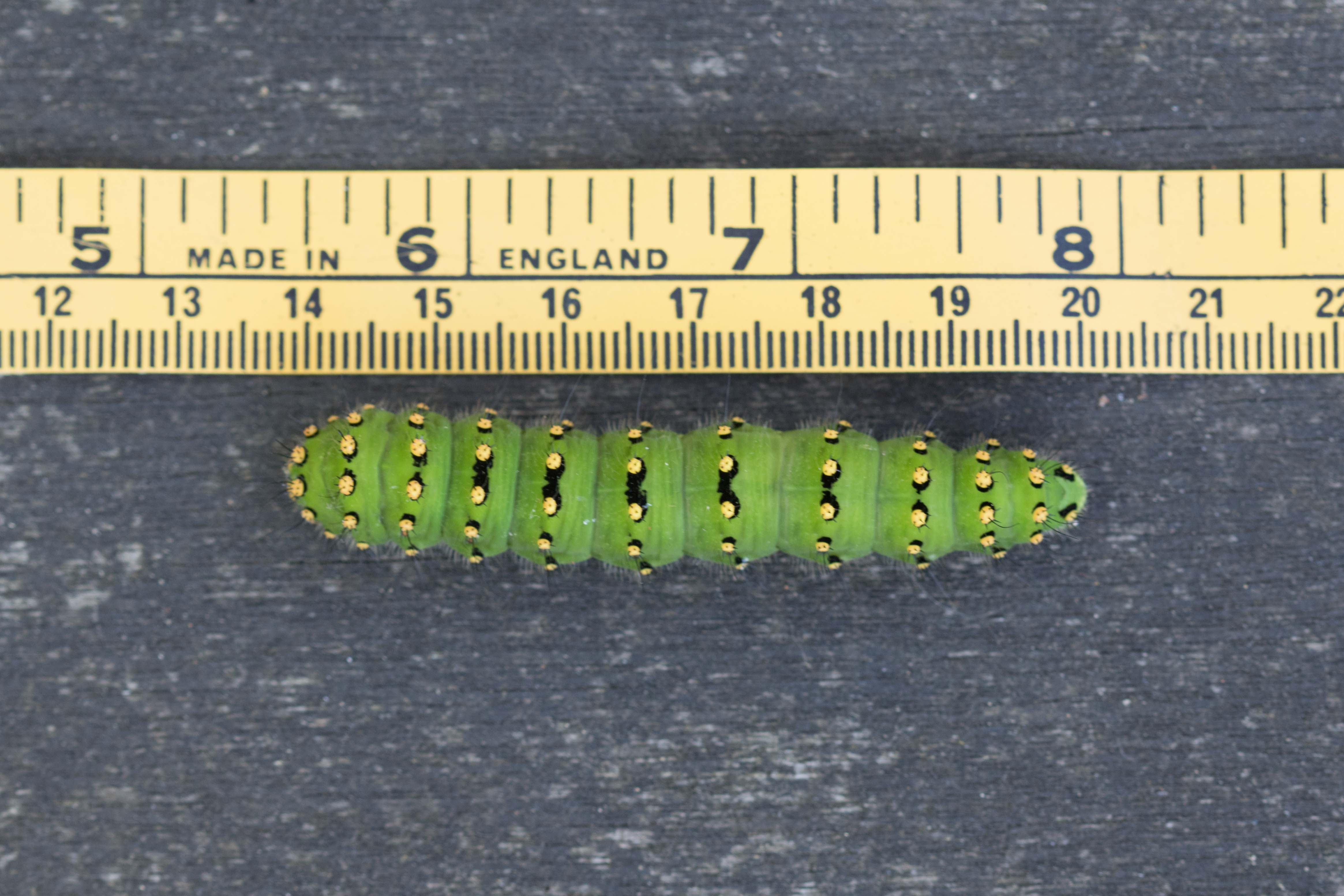Earlier this year we were fortunate to be given some Emperor Moth eggs by Martin Wainwright, author of the excellent “Martin’s Moths” blog. I saw a blog post by Martin offering eggs and took him up on his offer. Martin used to be the northern editor of the Guardian and unbeknown to him, the Country Diary section of that newspaper was something of an influence on my early adolescent self. I would turn to the Country Diary page (yes children, imagine turning pages of paper to find something of interest!) to see if there were snippets of information or descriptions of bird life from around the UK. It was a brief wildlife moment in the chaos of a large family breakfast routine. I recently discovered that Martin has published a collection of writings from The Country Diary, “A Gleaming Landscape: 100 years of the Guardian’s Country Diary“. Martin helps publicise moths enthusiastically and can be said to have brought moths to the people! The Emperor Moth eggs he gave us were tiny and sat attached to the corner of an eggbox: 
Little happened for a few days and then on May 16th the eggs began to hatch. Below, the freshly emerged caterpillars having their first taste of Hawthorn leaves. The eggs are visible in the background:
The first caterpillars are nearly entirely black in colour. There is just a hint of green at the base of the hair nodules: 
We then embarked on a month of daily Hawthorn leaf gathering. Fortunately, Hawthorn is one of the most abundant trees:
The caterpillars grew very rapidly, but their skin can only stretch to a certain limit. After nearly two weeks, the first caterpillars (known as first instars) shed their skin to reveal a larger black and orange skin. These are the second instars, the second stage. Below, Emperor Moth caterpillar transformation from tiny black first instars to huge green fourth instars in the space of just over a month. My left thumbnail is being used to give some idea of scale: 
Below, a fourth instar Emperor Moth caterpillar emerges from it’s third instar skin: 
The fourth instar caterpillars were big beasts. After a month the tank was filled with alarmingly active, huge green, black and yellow caterpillars. We were now up to three feeds a day!
The largest caterpillars were between 6 and 7 cm in length:
Emperor Moths are related to silk moths. After 6 weeks some of the adults began spinning their cocoons: 
The silk that they produce is silvery white in colour at first. They gather twigs and leaves in around them: 
In the centre of the picture below, you can make out the head of the caterpillar through the hole in the top of the cocoon: 
The silk then dries and ends up being a gingery colour. It sets as hard as steel. The caterpillars will spend the rest of the summer and all winter in their cocoon, before they emerge in April as adult moths. The energy that they derived from the Hawthorn leaves will sustain them all winter and for all of the adult life of the Emperor Moth. The adult moths do not feed. Their purpose is to emerge and mate and then they die. The moths (and butterflies) that we see on the wing are only the brief final adult stage of an insect species that spends far longer as a caterpillar and as a pupae, sometimes in a cocoon, depending on the species. In April 2019 we await the delight of the adults emerging, although Martin mentioned that sometimes they may skip a year and emerge two years after they have pupated. Emperor Moths are fantastic, large, beautifully marked moths. The larger females emit pheromones, attracting the males (below) with scent. And then it all begins again: mating, eggs, caterpillars and cocoons.
 [image © www.ukmoths.org.uk]
[image © www.ukmoths.org.uk]
Many thanks to Martin for his generosity and enthusiasm in our Emperor Moth project.

I stumbled across your post while researching about Emperor moths for my biology paper. 🙂
Beautiful photos and amazingly captured!
That was awesome, loved the photos with your thumbnail showing the scale. I was reading the Girl From Limberlost and had to look up what an Emperor moth was and found this post. Thanks!